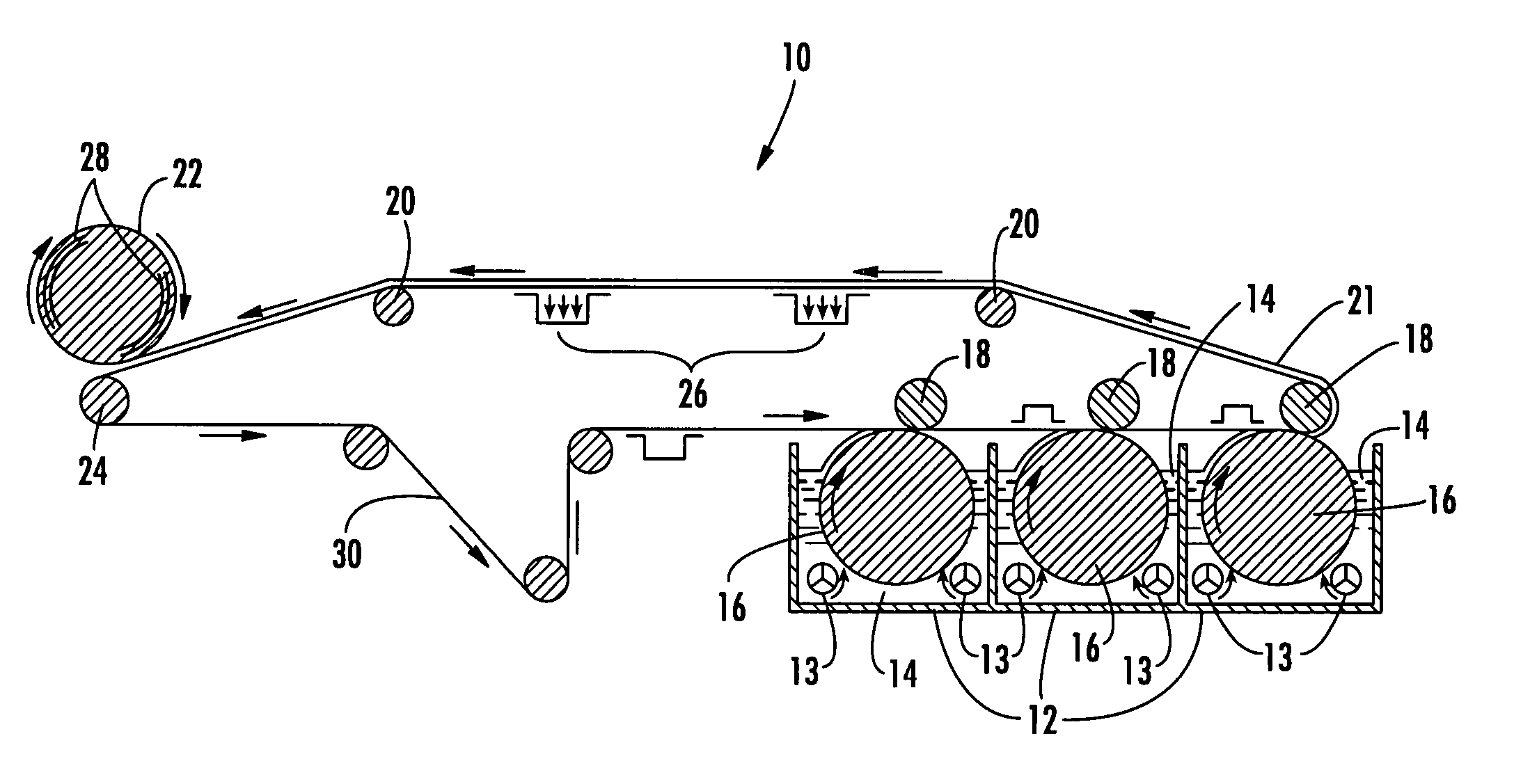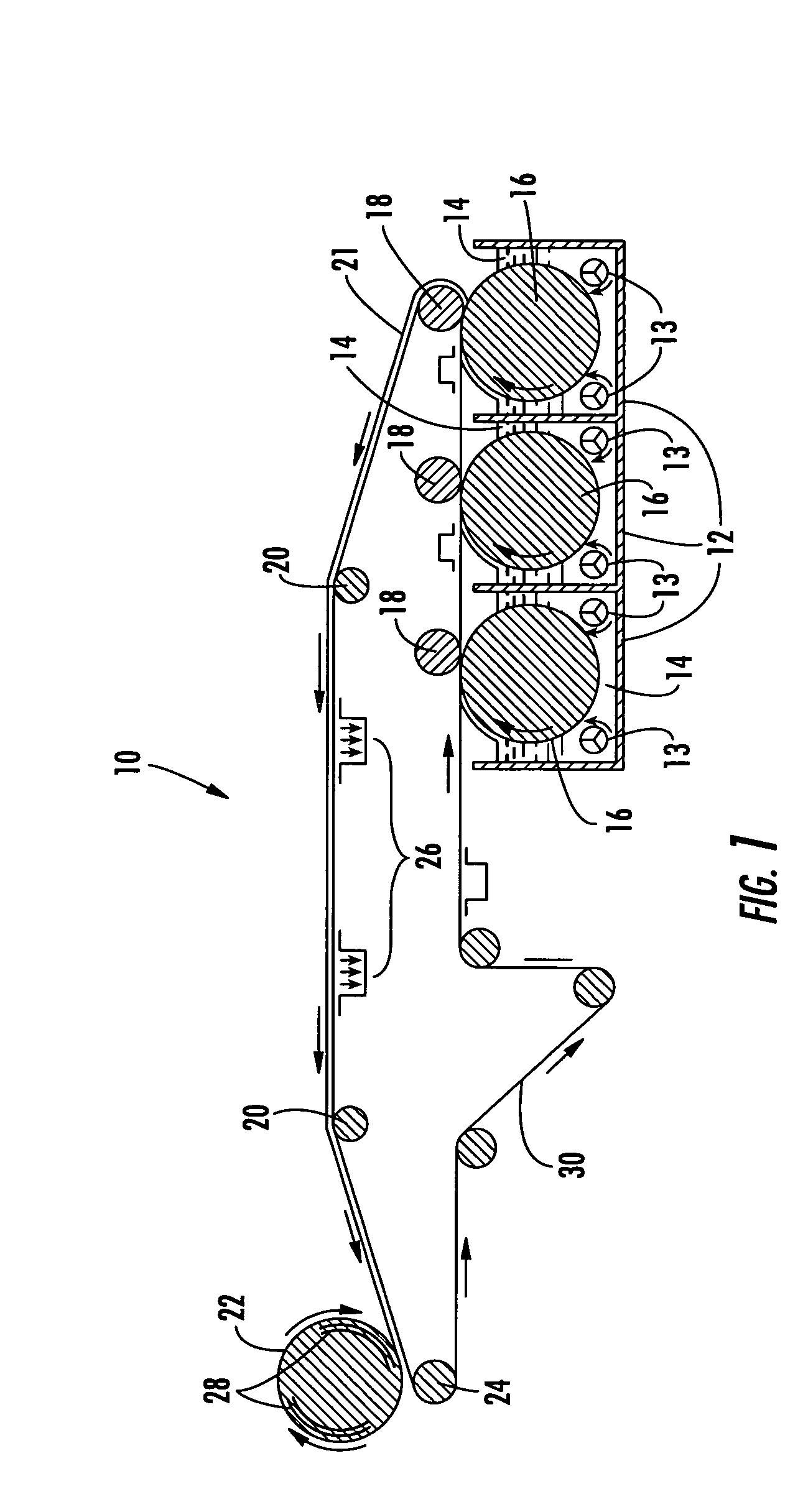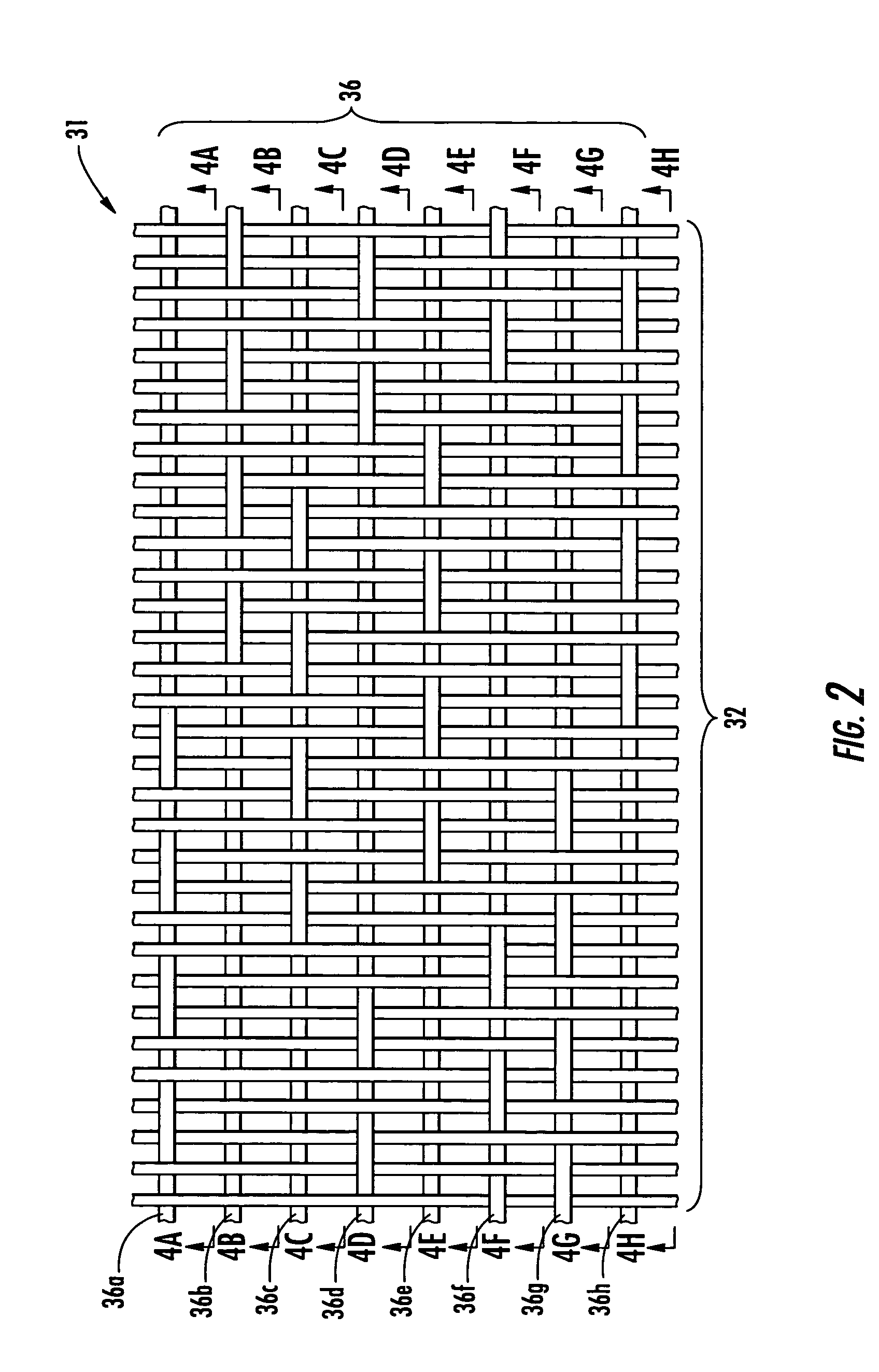Felt for forming fiber cement articles with multiplex base fabric
a fiber cement and fiber cement technology, applied in the field of fiber cement, can solve the problems of fiber cement felts being prone to blinding, fiber cement felts are typically exposed to high load conditions, and felts are prone to significant “compaction
- Summary
- Abstract
- Description
- Claims
- Application Information
AI Technical Summary
Benefits of technology
Problems solved by technology
Method used
Image
Examples
Embodiment Construction
[0023] The present invention will now be described more fully hereinafter, in which preferred embodiments of the invention are shown. This invention may, however, be embodied in different forms and should not be construed as limited to the embodiments set forth herein. Rather, these embodiments are provided so that this disclosure will be thorough and complete, and will fully convey the scope of the invention to those skilled in the art. In the drawings, like numbers refer to like elements throughout. Thicknesses and dimensions of some components may be exaggerated for clarity.
[0024] Referring now to FIG. 1, a fiber cement forming apparatus, designated broadly at 10, is illustrated therein. The forming apparatus 10, which performs a typical Hatschek process, generally includes an endless fiber cement felt 30 positioned in rolling contact with and driven by a number of guide rolls 20. Beginning in the lower right corner of FIG. 1, the felt 30 passes above three vats 12, each of whic...
PUM
| Property | Measurement | Unit |
|---|---|---|
| diameter | aaaaa | aaaaa |
| diameter | aaaaa | aaaaa |
| diameter | aaaaa | aaaaa |
Abstract
Description
Claims
Application Information
 Login to View More
Login to View More - R&D
- Intellectual Property
- Life Sciences
- Materials
- Tech Scout
- Unparalleled Data Quality
- Higher Quality Content
- 60% Fewer Hallucinations
Browse by: Latest US Patents, China's latest patents, Technical Efficacy Thesaurus, Application Domain, Technology Topic, Popular Technical Reports.
© 2025 PatSnap. All rights reserved.Legal|Privacy policy|Modern Slavery Act Transparency Statement|Sitemap|About US| Contact US: help@patsnap.com



